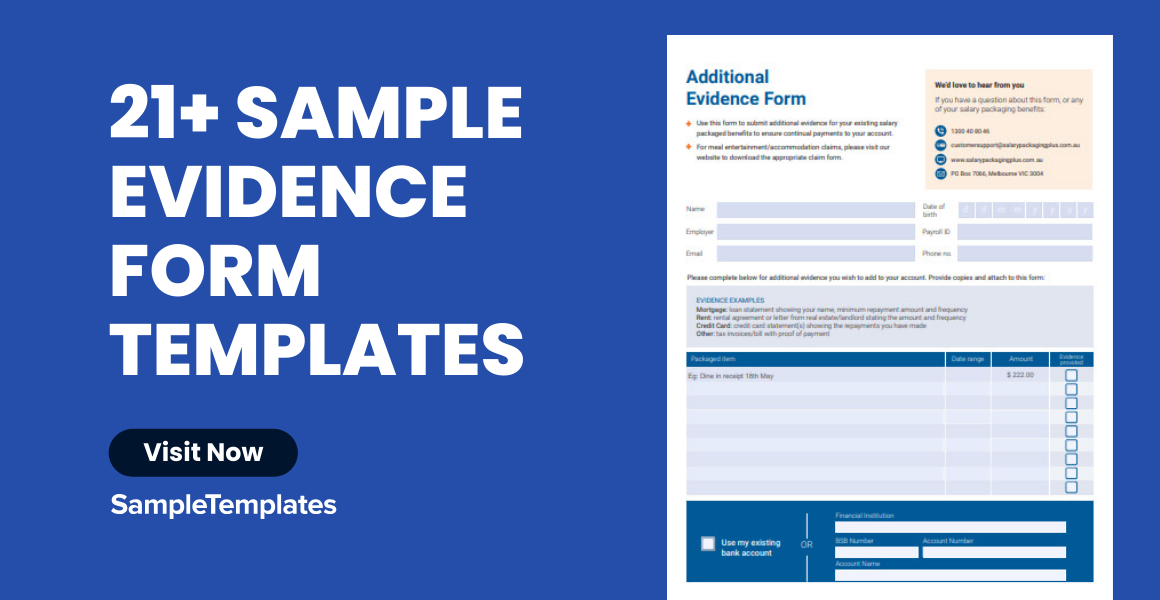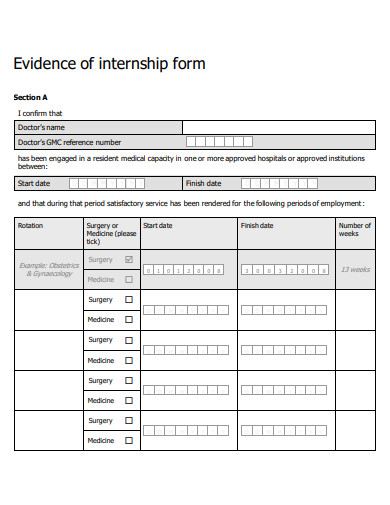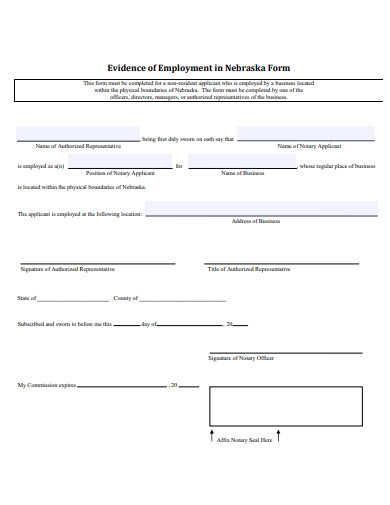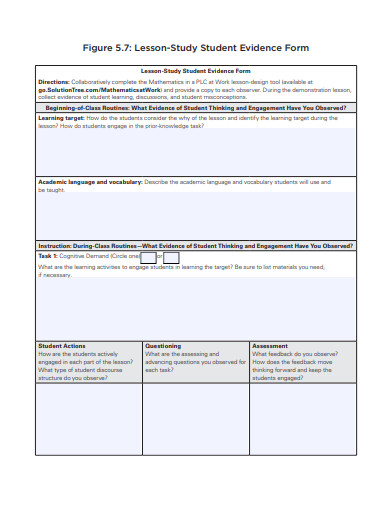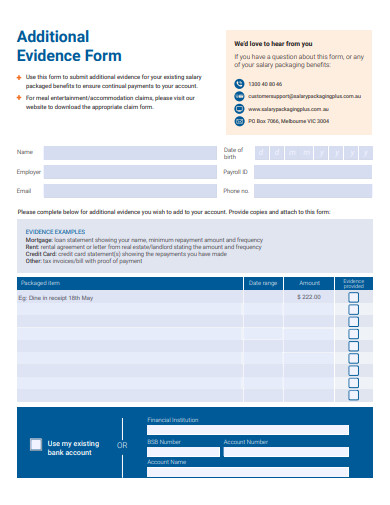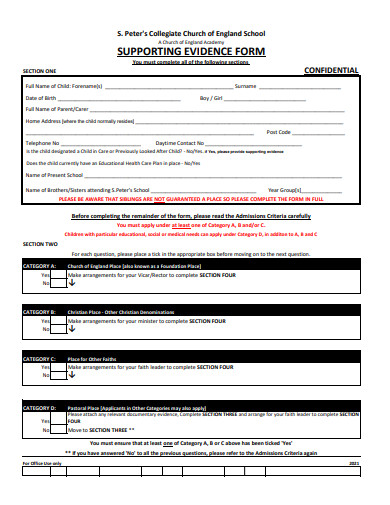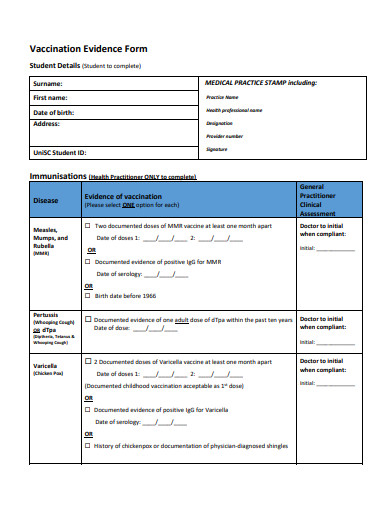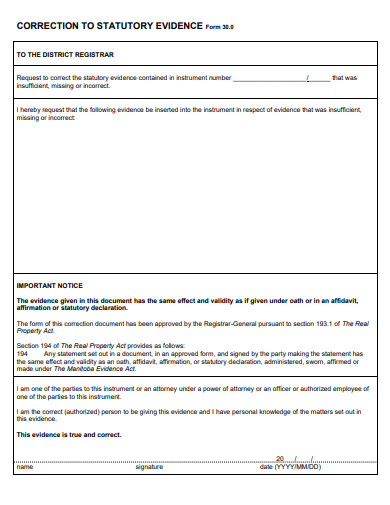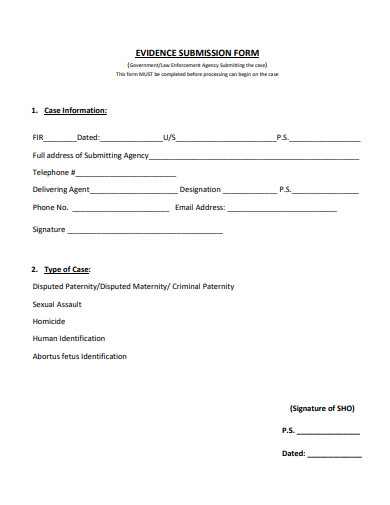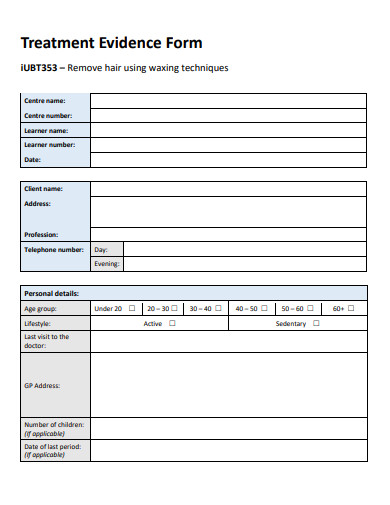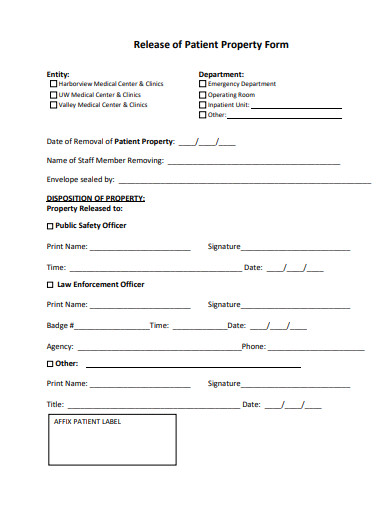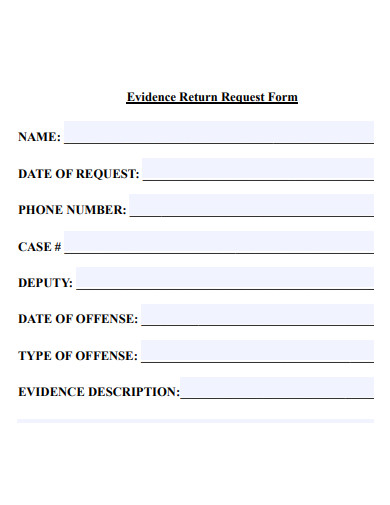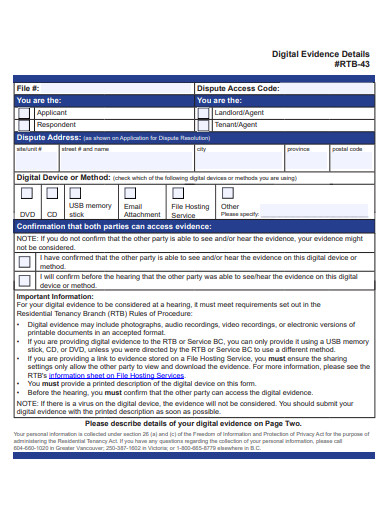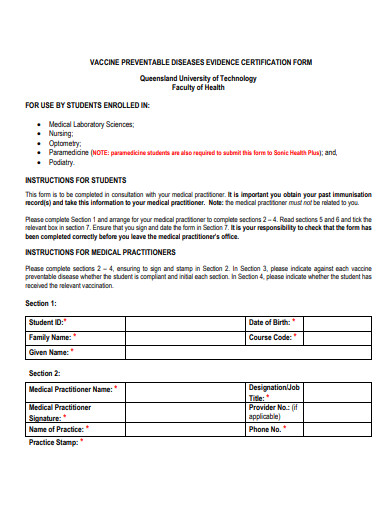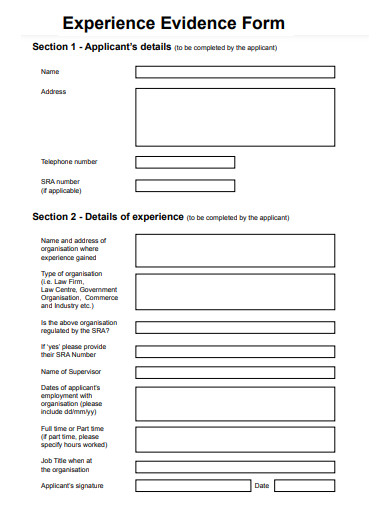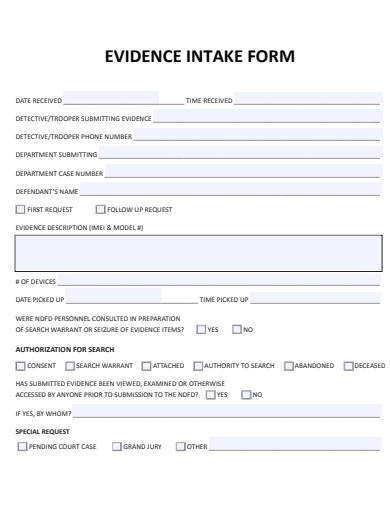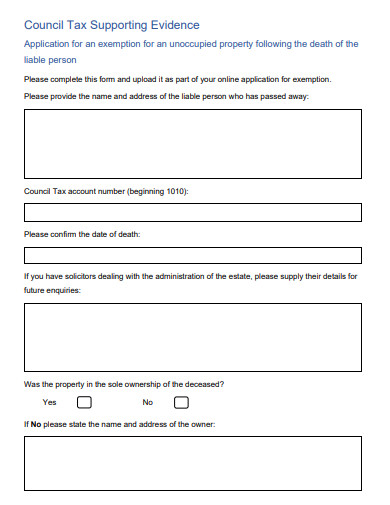Navigating the intricate pathways of data documentation and release? Our Sample Evidence Form is your comprehensive solution. Expertly designed for precision, it ensures every vital detail is captured, from initial data gathering to the final release form procedures. Streamline your evidence handling and elevate the integrity of your data with this indispensable tool, tailor-made for today’s professionals. Dive in to witness the confluence of efficiency and authenticity
21+ Evidence Form Samples
1. IT Evidence Submission FormTemplate
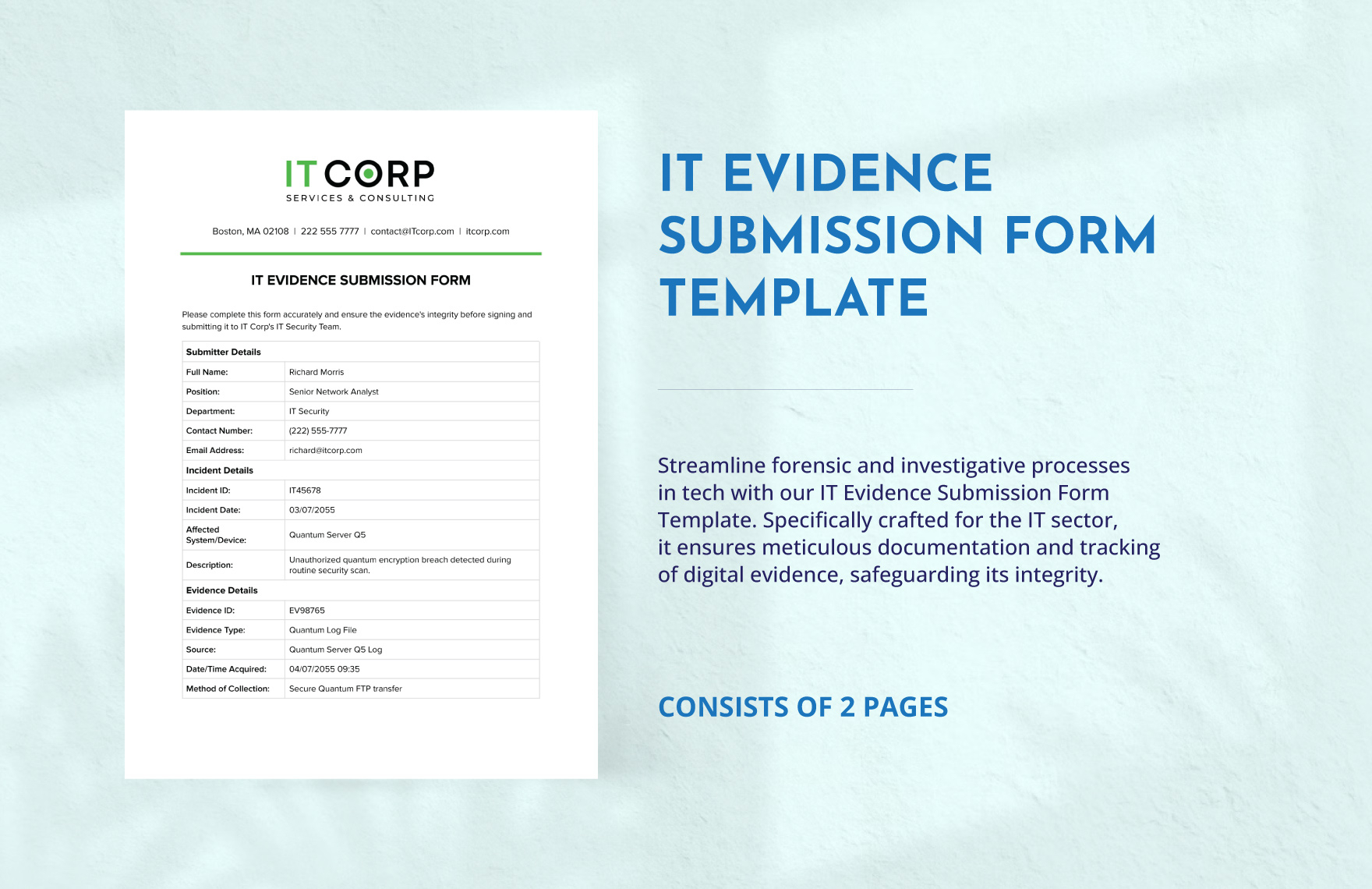
2. Medical Evidence Form Template
3. Disability Evidence Form Template
4. Evidence of Internship Form Template
5. Mental Health Evidence Form Template
6. Evidence of Employment Form Template
7. Lesson-Study Student Evidence Form Template
8. Additional Evidence Form Template
What is an evidence form?
Evidence, in various contexts ranging from research to legal proceedings, plays a pivotal role in decision-making, problem-solving, and establishing facts. At the core of managing this crucial information lies the evidence form.
Understanding the Essence of an Evidence Form
An evidence form is a systematic document used to record, categorize, and detail essential pieces of evidence. It aids in ensuring that every piece of information is accurately documented, traceable, and easily accessible. These forms become the cornerstone of operations in areas such as law enforcement, research projects, and any other scenario where evidence needs to be presented and verified.
Components of an Evidence Form
Typically, an evidence form will comprise the following elements:
- Descriptor: This is a brief description of the evidence, providing a quick reference.
- Evidence Number/ID: A unique identification number or code, helping in easy retrieval and referencing.
- Date and Time: Stamps indicating when the evidence was collected, ensuring chronological accuracy.
- Location of Collection: Specific details about where the evidence was sourced, which can be critical in many contexts.
- Collector’s Details: Information about the person who collected the evidence, ensuring accountability.
- Chain of Custody: A log of individuals who have had access to the evidence, ensuring its integrity and preventing tampering.
- Notes/Comments: Any additional observations or contextual information about the evidence.
Importance in Various Fields
In the legal realm, evidence forms act as a safeguard against tampering and mismanagement of crucial pieces of evidence. They guarantee that evidence presented in courts is genuine, has been stored correctly, and has maintained its integrity throughout the investigation process.
In research scenarios, these forms ensure that data collected is organized, traceable, and can be audited or reviewed when necessary. They also promote transparency and replicability in scientific studies.
How to create an evidence form?
Creating an evidence form that’s both functional and efficient is paramount. Whether it’s for a research project or a legal case, the structure and content of the form can make a significant difference in the evidence’s usability and credibility.
Understand the Purpose
Before you begin, understand why you’re creating the evidence form. The needs of a crime scene investigation differ vastly from a research experiment. Tailor your form according to the context and requirements.
Select a Format
While paper-based forms have been the traditional choice, digital formats are gaining popularity due to their ease of use, searchability, and storage benefits. Digital forms can also incorporate features like automatic timestamps and geolocation data.
Incorporate Essential Components
As mentioned in the earlier section, ensure that your form has spaces for the evidence description, unique ID, date and time stamps, location, collector’s details, chain of custody, and additional notes.
Keep It User-friendly
An evidence form should be straightforward. Use clear headings, provide ample space for handwritten notes (if it’s paper-based), and use boxes or dropdowns for standardized data. If it’s digital, consider adding features like dropdown menus, checkboxes, and autofill suggestions.
Test and Revise
Before finalizing your form, test it in a real-world scenario. This will allow you to spot any potential issues, omissions, or areas of confusion. Gather feedback from users and make necessary revisions.
Maintain Confidentiality
If your evidence form contains sensitive data, especially in legal or medical scenarios, ensure that it adheres to confidentiality standards. Digital forms should have encryption and password protections, and paper forms should be stored securely.
Regular Updates
As protocols and requirements evolve, your evidence form should adapt. Regularly review and update your form to ensure it meets current standards and needs.
In conclusion, an evidence form is a foundational tool for managing critical pieces of information. By understanding its significance and investing time in creating an efficient form, you enhance the accuracy and credibility of your evidence collection process.
9. Supporting Evidence Form Template
10. Vaccination Evidence Form Template
11. Correction to Statutory Evidence Form Template
12. Evidence Submission Form Template
13. Treatment Evidence Form Template
14. Release of Patient Property Form Template
15. Evidence Return Request Form Template
16. Digital Evidence Details Form Template
17. Evidence Certification Form Template
18. Experience Evidence Form Template
19. Evidence of Authority Form Template
20. Documentary Evidence Assessment Application Form Template
21. Evidence Intake Form Template
22. Council Tax Supporting Evidence Template
What is a Sample of a Form of Evidence?
Evidence, in its various manifestations, is the cornerstone of decision-making across myriad contexts, from the courtrooms to scientific labs. Often, when we hear “sample of a form of evidence,” it might evoke the image of a physical specimen, such as a hair strand in a criminal investigation or a tissue sample in medical research. However, evidence can span both tangible and intangible realms.
Broadening the Scope of Evidence
A “sample” denotes a portion or piece extracted from a larger whole to represent the entirety. Similarly, a “form” of evidence denotes the manner or the type in which evidence is presented. So, when we talk about a sample of a form of evidence, we are essentially discussing a representative piece of a particular type of evidence.
Common Forms of Evidence
To understand this better, let’s dive into some common forms of evidence and what a sample of each might look like:
- Physical Evidence: This includes tangible items that can be touched or held. They are often used in crime scene investigations.
- Sample: A single bullet casing found at a crime scene which might hint at the type of weapon used.
- Documentary Evidence: As the name suggests, this refers to evidence contained in documents, be they digital or paper-based.
- Sample: An email extract showing evidence of a conversation about insider trading.
- Digital Evidence: This refers to information stored or transmitted in binary form which may be relied upon in court.
- Sample: A log from a computer server showing unauthorized access at a specific date and time.
- Testimonial Evidence: This is information presented by a witness in a legal proceeding.
- Sample: A snippet of a deposition transcript where a witness recalls seeing a suspect near the scene of a crime.
- Demonstrative Evidence: Visual or auditory aids, like diagrams, models, animations, or simulations used to clarify or support facts.
- Sample: A 3D reconstruction video of how an accident might have occurred, based on the given evidence.
Importance of Sampling in Evidence
The act of sampling is pivotal in both investigations and research. By examining a sample, professionals can make informed decisions or hypotheses about the larger body of evidence. For instance, scientists might analyze a sample of water from a river to make determinations about its overall health and pollution levels.
In legal contexts, a sample often undergoes rigorous examination. Its credibility, source, and relevance are scrutinized, as it can influence judgments and verdicts.
Challenges with Sampling
While samples are invaluable, they come with challenges. A misrepresentative sample can lead to faulty conclusions. It’s why the process of collecting, preserving, and presenting a sample is crucial.
In digital realms, where evidence is often vast and sprawling, the challenge also lies in sifting through massive data to extract the most relevant samples. Misinterpretation or tampering can jeopardize its integrity.
Concluding Thoughts
A sample of a form of evidence, in essence, serves as a gateway to deeper insights, understandings, and determinations. Whether it’s a shard of glass from a crash site or a brief audio clip in a vast recording, these samples are instrumental in piecing together larger narratives and truths. However, they must be approached with care, expertise, and an understanding of their significance within the broader context.
Related Posts
Sample Sworn Affidavit Forms
Vehicle Inspection Forms Samples & Templates
Sample Employee Advance Forms
Sample Child Travel Consent Forms
Sample Testimonial Request Forms
Sample Employee Details Forms
Sample Divorce Forms
Sample Attestation Forms
Employee Performance Appraisal Form Templates
FREE 9+ Sample Presentation Evaluation Forms in MS Word
FREE 10+ School Admission Form Samples & Templates in MS Word | PDF
FREE 30+ Patient Consent Form Samples in PDF | MS Word
FREE 10+ Sample Sign Off Form Templates in PDF | MS Word
FREE 11+ Sample Medical Consultation Forms in PDF | MS Word
FREE 8+ Sample Donation Forms in PDF | MS Word
